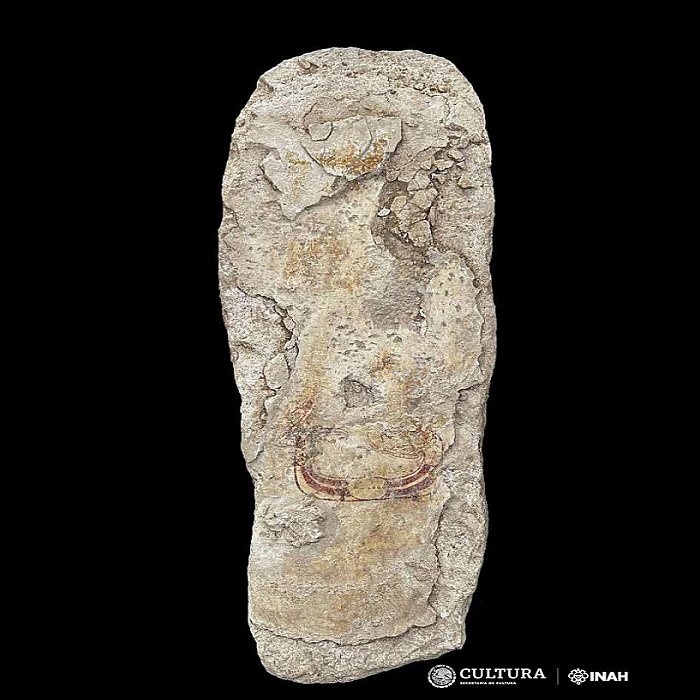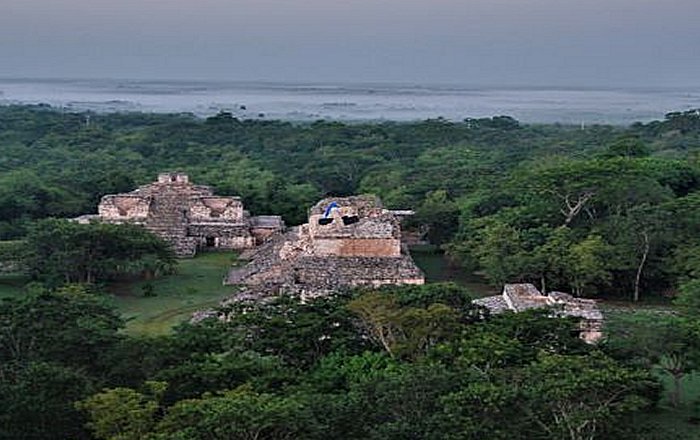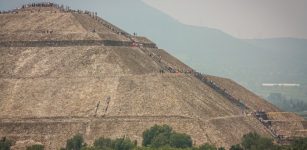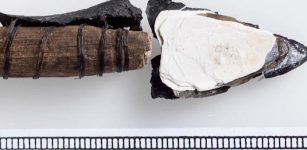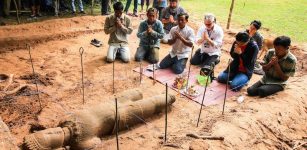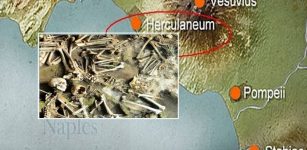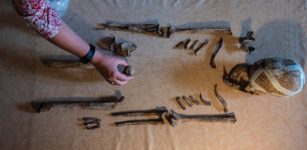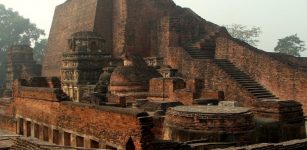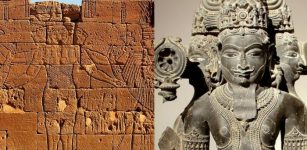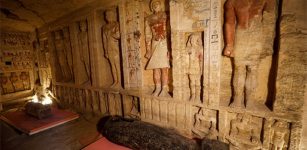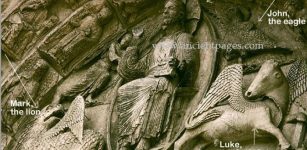A Painted Vault Lid Discovered In Royal Palace Of Ek’ Balam Will Shed Light On History Of The Acropolis Of Ek’
Conny Waters - AncientPages.com - Archaeologists in Mexico have discovered a painted ancient vault lid, decorated with a depiction of a serpent.
Find painted vault top, Ek' Balam. Photo: INAH.
The Ministry of Culture of the Government of Mexico, through the National Institute of Anthropology and History (INAH), registered this unpublished mural painting on the stone artifact.
Ek' Balam is a Yucatec-Maya archaeological site within the municipality of Temozón, Yucatán, Mexico. It lies in the Northern Maya lowlands, 25 kilometers (16 mi) north of Valladolid and 56 kilometers (35 mi) northeast of Chichen Itza. The place was particularly important place from the Preclassic until the Postclassic period. During this time, it played an essential role as the seat of a Mayan kingdom.
The site is noted for preserving the plaster on the tomb of Ukit Kan Lek Tok', the most important ruler of the Maya city of Ek Balam during the Late Classic period (A.D. 600 to 900), buried on the side of the largest pyramid.
Archaeologists also informed that this discovery of the stone block - used by the ancient Mayans as a vault lid, in one of the structures of the Ek’ Balam Acropolis - will play a crucial role in deciphering the history of the Ek’ Balam Acropolis.
This block is the seventh painted vault lid unearthed in the last year in this archaeological zone of excavations of Yucatan.
Find painted vault top, Ek' Balam. Photo: INAH.
The finding was announced at the morning press conference of the Mexican Presidency, headed on this occasion by the Secretary of the Interior, Luisa María Alcalde Luján, where the progress of work of the Mayan Train Section 4, which will travel 239 kilometers between the Izamal stations, in Yucatan, and Cancun Airport, in Quintana Roo, were presented.
The general director of the INAH, Diego Prieto Hernández, explained that, with the recent discovery of this vault lid, there are 30 of these architectural elements registered over the years at the site, which have provided relevant data, such as the names of some of the rulers of the kingdom of Talol (Ek’ Balam), as well as the dates when the rooms of the royal palace or Acropolis were constructed.
cording to the team, unlike the earlier discovered stone lids, the recently one does not have black paint strokes, but was painted in red color.
The lid represents a symbol in the form of a “U”, which could resemble a cave with underground water, probably allusion to the underworld, where a snake seems to enter. The head and part of the body of the reptile is seen, which could be related to the serpentine foot of the god K'awiil.
K'awiil represents a Maya deity associated with lightning, serpents, maize, and fertility. He is depicted with a zoomorphic head, with large eyes, long, upturned snout, and attenuated serpent foot.
The discovery of the lid will contribute to more information about the builders of the elite enclosures of the East Elevated Plaza of the Acropolis, as well as the date on which they were erected, as pointed out the directors of the Ek’ Balam Archaeological Project, Leticia Vargas de la Peña and Víctor Castillo Borges.
Ek' Balam archaeological site. Photo by Mauricio Marat. INAH.
Ek' Balam was occupied from the Middle Preclassic through the Postclassic, although it ceased to thrive as a major city past the Late Classic.
It is worth mentioning that in this sector of the building, the facades of the rooms decorated with the stuccoed reliefs of captors and captives were recently found.
The head of the INAH stressed that the implementation of the Improvement Program in Archaeological Zones (Promeza), in 27 sites in the southeast and the Yucatan Peninsula, which will see an increased influx of visitors due to the operation of the Mayan Train, has led to important discoveries, such as the one described.
In this sense, he added, the Promeza has made it possible to realize various projects in the Archaeological Zone of Chichen Itza, the most recent, the public opening of the Chichen Viejo section or Initial Series.
The research and conservation tasks in Chichen Itza, to which 14% is left to conclude, have focused on important structures, such as the Great Ball Game, the Temple of the Warriors, the Annex of the Nuns, the House of the Snails and the Moon, and the Group of the Nuns; while the signage has been completely renovated.
The head of the INAH stressed that the implementation of the Improvement Program in Archaeological Zones (Promeza), in 27 sites in the southeast and the Yucatan Peninsula, which will see an increased influx of visitors due to the operation of the Mayan Train, has led to important discoveries, such as the one described.
In this sense, he added, the Promeza has made it possible to realize various projects in the Archaeological Zone of Chichen Itza, the most recent, the public opening of the Chichen Viejo section or Initial Series.
See also: More Archaeology News
The research and conservation tasks in Chichen Itza, to which 14% is left to conclude, have focused on important structures, snd among them the famous Great Ball Game, the Temple of the Warriors, the Annex of the Nuns, the House of the Snails and the Moon, and the Group of the Nuns; while the signage has been completely renovated.
Written by Conny Waters - AncientPages.com Staff Writer


